Nostalgic Classics: Iconic Beach and Leisure Cars in Retrospect
DS
Nostalgic Classics: Iconic Beach and Leisure Cars in Retrospect
Mallorca, sunshine, the sea, and a touch of retro feeling: for many, there’s nothing better than cruising coastal roads in a classic leisure and beach car. Today we take you on a nostalgic journey through four iconic vehicles that embody this lifestyle. Each of them — the Land Rover Series II/III, the Fiat Jolly, the Citroën Méhari, and the Jeep Wrangler — tells its own story, filled with adventure, glamour, or carefree joy.
Land Rover Defender Series II & III – Royal Off-Road Legends
The Land Rover Series II and III — direct predecessors of what we know today as the Defender — instantly evoke images of wide savannahs, muddy forest tracks, and even royal estates. In the 1960s, they defined the very idea of a go-anywhere off-road vehicle. Built to be simple, rugged, and reliable, their aluminum bodies and permanent four-wheel drive turned them into farm workhorses, expedition companions, and military support vehicles alike.
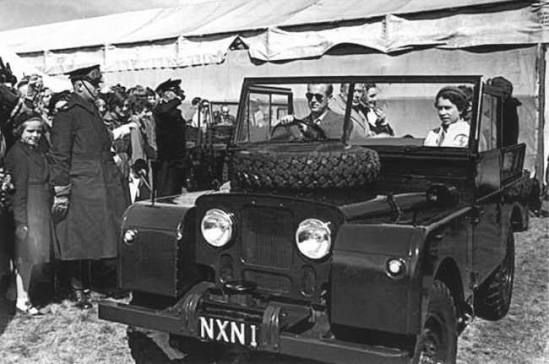
The British Royal Family had a particular fondness for these Land Rovers. Queen Elizabeth II herself was often seen at the wheel, especially on the grounds of Balmoral Castle in Scotland. Specially adapted Series II models with raised seats and blue lights even served as ceremonial parade vehicles. This royal connection cemented the Land Rover’s cultural status: it became a symbol of British tradition and resilience.
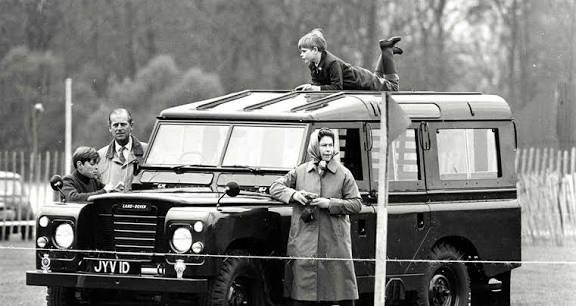
From African safaris to mountain farms, the Series II and III were everywhere. Their charm today lies in their raw simplicity and mechanical honesty. One can easily imagine a Series II rattling over Mallorca’s rocky Tramuntana trails, the smell of pine and salt in the air — pure nostalgic off-road adventure.
Fiat Jolly – Dolce Vita on Wheels
When you think of the Fiat Jolly, you can’t help but smile. This playful little car — with no doors, wicker seats, and a striped fabric roof with tassels — was the epitome of Mediterranean glamour in the late 1950s and 60s. Based on the Fiat 500/600 and hand-built by Ghia, the Jolly was designed as a luxury “beach buggy” for the rich and famous.
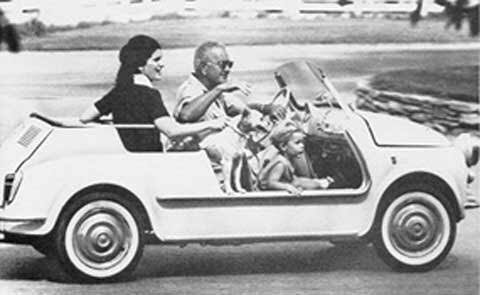
It was the ultimate yacht tender: millionaires would hoist them onto their boats and use them to roll ashore in style. Owners included Aristotle Onassis, Grace Kelly, and film stars like Yul Brynner. Luxury hotels used them as guest shuttles, and their pastel colors and cheerful design became synonymous with Capri, St. Tropez, and Monaco.
The Jolly was never practical or cheap — nearly double the cost of a standard Fiat 500 — but that was exactly the point. It was a status symbol of la dolce vita. Fewer than 100 original examples survive today, making them rare collector’s treasures. Yet the nostalgia remains: the Jolly embodies the carefree summers of the 60s, with wide-brimmed hats, wicker baskets of fresh bread, and slow drives along the coast. It is sunshine, playfulness, and freedom distilled into four wheels.
Citroën Méhari – The Plastic-Bodied Leisure Icon
Unveiled in 1968 — the very year of Europe’s counterculture revolutions — the Citroën Méhari could not have been better timed. Based on the humble 2CV, but with a revolutionary ABS plastic body, it was colorful, lightweight, and utterly unafraid of water, sand, or salt. Its canvas roof and removable doors made it essentially a rolling beach hut.
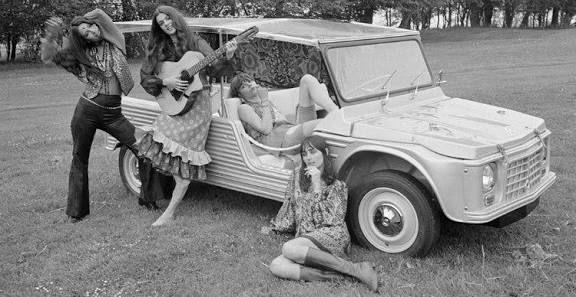
Though designed as a practical utility vehicle for farmers and seaside businesses, the Méhari quickly became a symbol of French leisure culture. It was easy to clean (just hose it down), economical, and versatile. The French army ordered thousands of them, and special versions were even dropped by parachute. In 1980, Méharis competed in the Paris–Dakar Rally, proving their toughness in the desert.
But the Méhari’s true magic lay in its carefree character: bright orange, green, or yellow models became fixtures of Mediterranean coastlines, often carrying surfboards, diving gear, or camping kits. Films like The Gendarme of St. Tropez cemented its pop-cultural status. Today, surviving Méharis bring back memories of 70s beach holidays, lazy drives along promenades, and a free-spirited lifestyle.
Jeep Wrangler – From War Hero to Nostalgic Icon
Few cars carry as much history and instant recognition as the Jeep Wrangler. Its story begins in World War II, when Willys built the original Jeep for the US Army — a tough little 4x4 that helped drive the Allies to victory. After the war, the Jeep became civilianized as the CJ (Civilian Jeep), beloved by farmers, adventurers, and outdoorsmen.
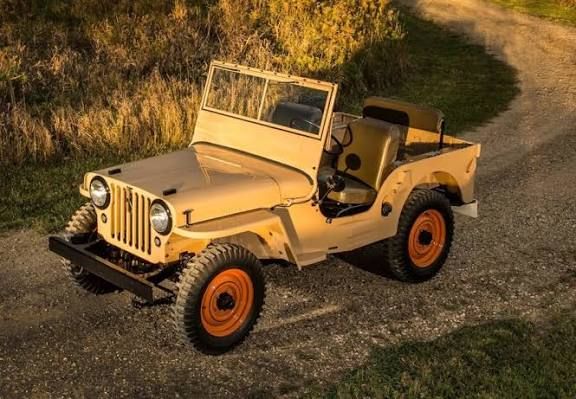
By 1987, the Wrangler officially arrived as the CJ’s successor. Despite technical upgrades, it stayed true to its roots: boxy body, removable roof, fold-down windshield, and the iconic seven-slot grille. It remained — and still remains — one of the last vehicles where you can literally take the doors off and drive with nothing between you and the open air.
The Wrangler is more than a car: it’s a lifestyle symbol. It evokes images of coastal drives with the top down, desert trails, or jungle adventures — from Jurassic Park to countless road trips. Jeep owners form tight-knit communities, sharing a bond rooted in freedom and adventure.
On Mallorca, a Wrangler fits right in — whether cruising scenic coastal roads or exploring rugged inland trails. It is nostalgic without being outdated, modern yet timeless. That balance is what makes the Wrangler a living legend.
